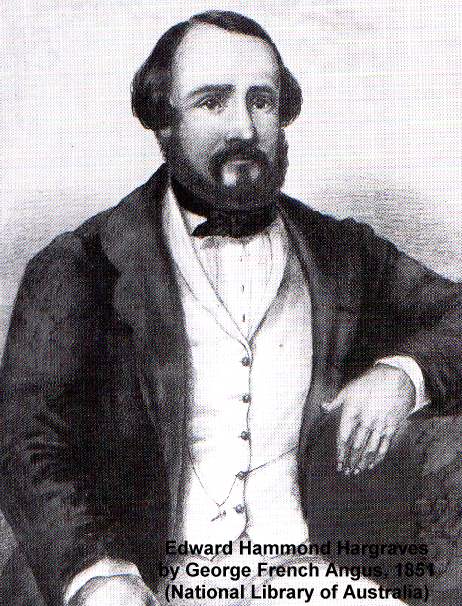
- •The squatter period
- •*Damper (австралийский хлеб)
- •Cooking the damper
- •Gold fever
- •Edmund Hargraves
- •Eureka Flag
- •Peter Lalor
- •Ned Kelly
- •In 1860 and 1861, Robert Burke and William Wills became the first white people to cross the continent from south to north. They died of starvation on the return journey south.
- •Site of Robert o'Hara Burke's Death
By 1830 approximately 14000 free settlers had decided to seek their fortunes in Australia, compared with the 63 000 convicts. This all changed in 1832 when the British government decided to finance working-class emigrants with some of the money gathered from land sales in Australia. The scheme was such a success that in the years between 1830 and 1850 Australia acquired another 173000 free settlers, together with 83 000 more convicts.
Convicts and settlers who came to Australia found that in comparison to Europe, conditions were very good and with hard work and determination they could prosper. They encouraged their relatives in England to come to Australia and enjoy the prosperity. Women migrants were also assisted to curb a gender imbalance in the colonies, to work as domestic servants and to foster marriages and childbirth.
With increasing numbers of free migrants and the desire of Colonial society to be free of the hated ‘convict stain’, the Colonial Government decided to cease (прекратить) transportation to New South Wales in 1852.
The squatter period
During the 1820's, the people of New South Wales began to develop a strong economy based on the production of wool for export to Britain. The large profits that could be made from the wool trade encouraged more and more settlers to raise sheep for a living. But the government of New South Wales allowed settlers to buy or lease grazing (пастбищный) land only within a limited area. All the land outside this area was considered government property. But by the mid-1820s the numbers of sheep had increased so greatly that, no matter what the government said, farmers set out with their flocks (стада) to find pastures (пастбища) on the grassy plains of the interior. Many settlers occupied government land illegally. These illegal landholders became known as squatters. When they came to land which had not been taken up, each man marked out his run (an outdoor enclosure for domestic animals – русс. – «рен»), established his station (a sheep or cattle ranch) and claimed it as his own. Where, as often happened, there was no woman in the party, the men lived roughly, "half savage, half mad . . . half dressed, half not, unshaven, unshorn, shoes never cleaned, eating tea and damper*." (M. Kiddle, Men of Yesterday, Melbourne University Press, 1061.)
*Damper (австралийский хлеб)
In colonial Australia, stockmen (ковбои) developed the technique of making damper out of necessity. Often away from home for weeks, with just a camp fire to cook on and only sacks of flour as provisions, a basic staple bread evolved. It was originally made with flour and water and a good pinch (щепотка) of salt, kneaded (месить), shaped into a round, and baked in the ashes of the campfire or open fireplace.
Cooking the damper
Eventually the government had to recognize these squatters and in 1836 the Governor announced that anyone could squat on Crown lands on payment of 10 pounds a year license. The squatter's flocks and herds increased. If droughts (засуха) or diseases did not wipe out (уничтожить) his stock (скот) he had a good chance of becoming a rich man.
During the 1830's, a number of sheep farmers migrated to southern New South Wales from Tasmania and the area around Sydney. They founded Melbourne and occupied the rich grazing lands south of the Murray River. They did so well that they asked Great Britain to make them a separate colony. The request was granted in 1851. That year, the part of New South Wales south of the Murray River became the new colony of Victoria.
Gold fever
A clergyman who had been out preaching to the people on the sheep runs (овцеводческая ферма) once showed the governor of New South Wales some gold he had found. "Put it away", said the governor, "or we shall all have our throats cut." This was about 1840. New South Wales was still a penal colony. The governors wanted to keep order, particularly amongst the convicts. They imagined crime and chaos if there was a gold rush. So whenever reports of gold came in - and there were plenty of them - the governors hushed them up (замолчать).
It took the cessation (прекращение) of transportation, and the Californian gold rush of 1848, to change official attitudes towards gold. By the end of the 1840s the government had decided that a gold rush was worth the risk. Any problems would be outweighed by the wealth gold would bring to Britain and her colonies. A reward was offered for the discovery of gold in payable (промышленный) quantities.
Edmund Hargraves had just come back from the goldfields of California. There he had learnt where to look for gold and how to mine it in various ways. Near Bathurst Hargraves he panned (намыл) a few specks (крупинок) of gold from a creek (ручей) and took the sample back to Sydney to show the governor. It was hardly sufficient to be considered "payable", but Hargraves convinced enough people to start a rush, and collected the 10,000 pounds reward.

